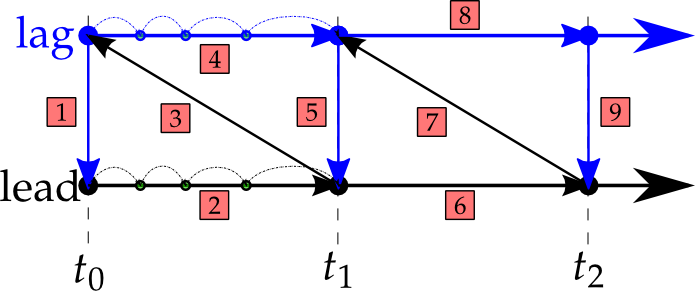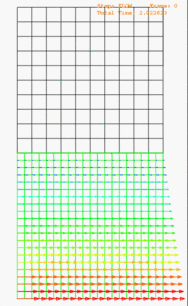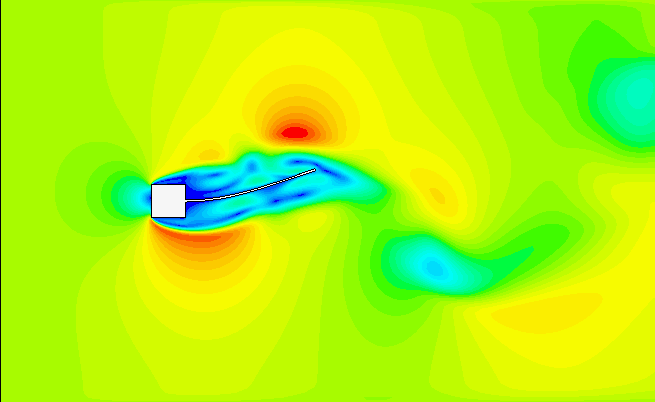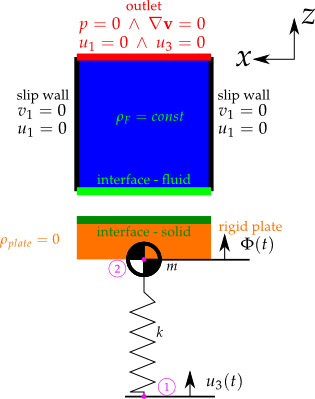Evaluation and Investigation of Explicit Coupling Schemes for Partitioned Fluid-Structure Interaction
This honors project was done at the R&D department of SIMULIA in Fremont CA. The project was advised by the chair of structural analysis (Technical University of Munich).
1. Infinitely Long Thin-walled Cylinders Subjected to Aeroelastic Supersonic Flow
| This particular problem studies the flutter behavior of infinitely long thin-walled cylinder subjected to aero-elastic supersonic flow. Such simulations are important to understand the complex nonlinear behavior which is present in high-speed flight vehicles such as aircrafts, rockets, launch vehicles where one side of the structure is exposed to high supersonic flow and on the other side to still air. Understanding the complex interaction between the various structural and aerodynamic nonlinearities, allows defining the flutter boundary in which it is safe to operate and avoid catastrophic failure at high-speed. The supersonic flow is computed through the third-order piston theory. Third-order piston theory is popular modeling technique used for supersonic and hypersonic aero-elastic analysis. Results are compared to analytical derived results from [1]. This example demonstrates how to couple Abaqus with a standalone program which computes pressure loading according to third-order piston theory, where the pressure is a function of time and displacement computed by Abaqus analysis. Abaqus and the standalone program are coupled through the co-simulation capability using the SIMULIA Co-Simulation Engine. The program illustrates the use of the SIMULIA Co-Simulation Engine.  |
 |
 |
2. Verification Problems
In oder to be able to judge about the stability and accuracy of algorithms which are used for the solution of mulitphysics problems it is essential to have closed form solutions for small verification problems. Within this thesis two verification problems are suggested and a closed form solution is provided. The problems were used to perform several parameter studies in order to understand phenomena like pressure spikes and stability of explicit partitioned solution methods.  |
|
 |
3. Benchmark Problems
|
Finally the results of the verification examples were used in oder to solve some benchmark prolems. The Figure on the right shows the explicit partioned solution of the benchmark proposed in [2]. Abaqus/Standard was used for the structural domain and StarCCM+ was used for the fluid domain. |
 |
References:
[1] L. Librescu, P. Marzocca, and W.A. Silva. Supersonic/Hypersonic Flutter and Postflutter of Geometrically Imperfect Circular Cylindrical Panels. Journal of Spacecraft and Rockets, 39(5), 2002.
[2] Wall, W. A. and E. Ramm Fluid-structure interaction based upon a stabilized (ALE) finite element method. Computational Mechanics. New Trends and Applications, 1998


